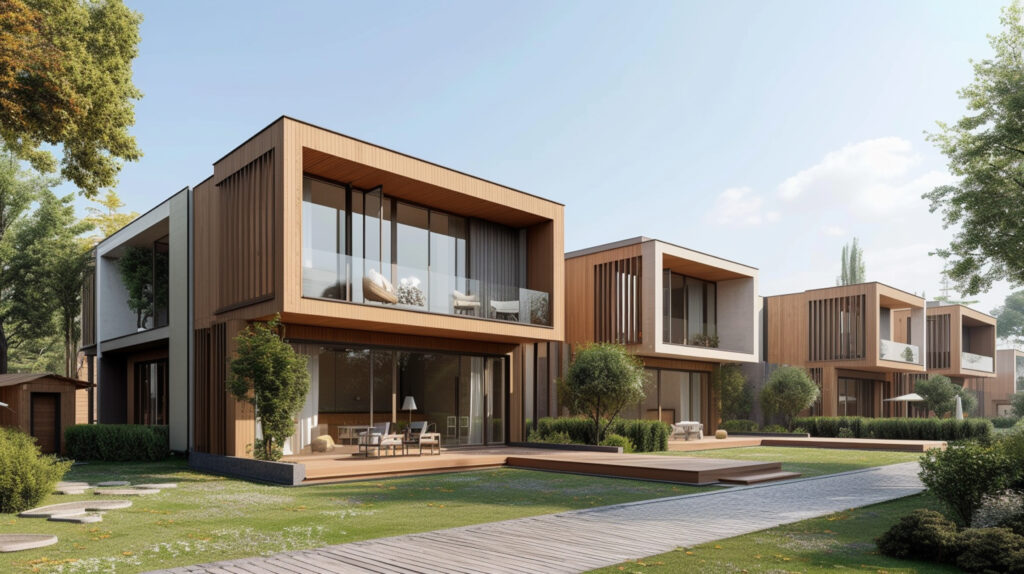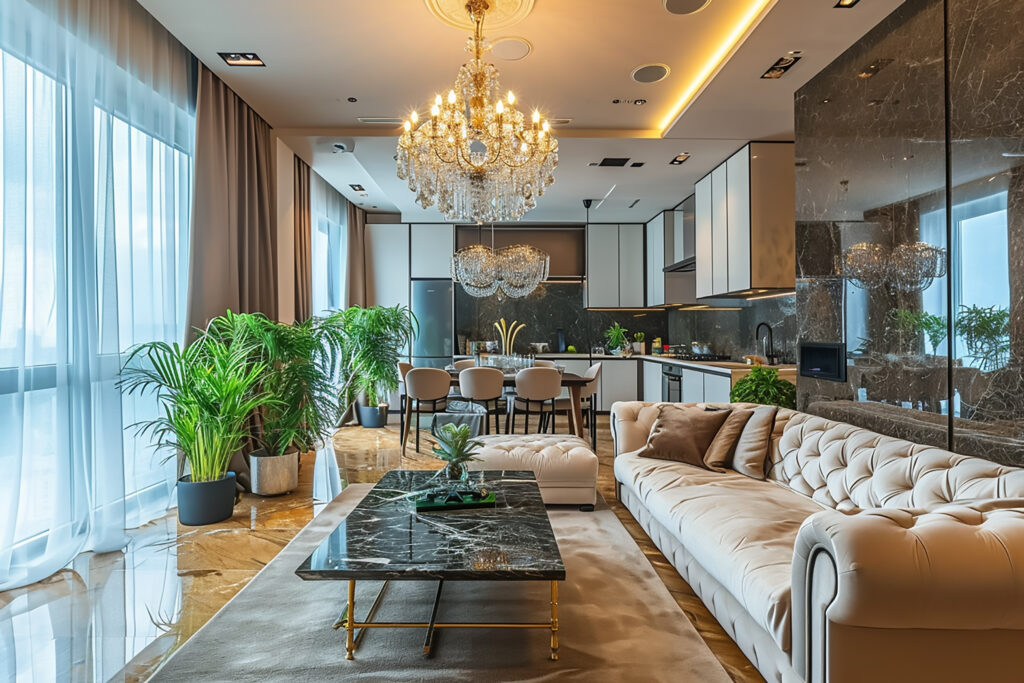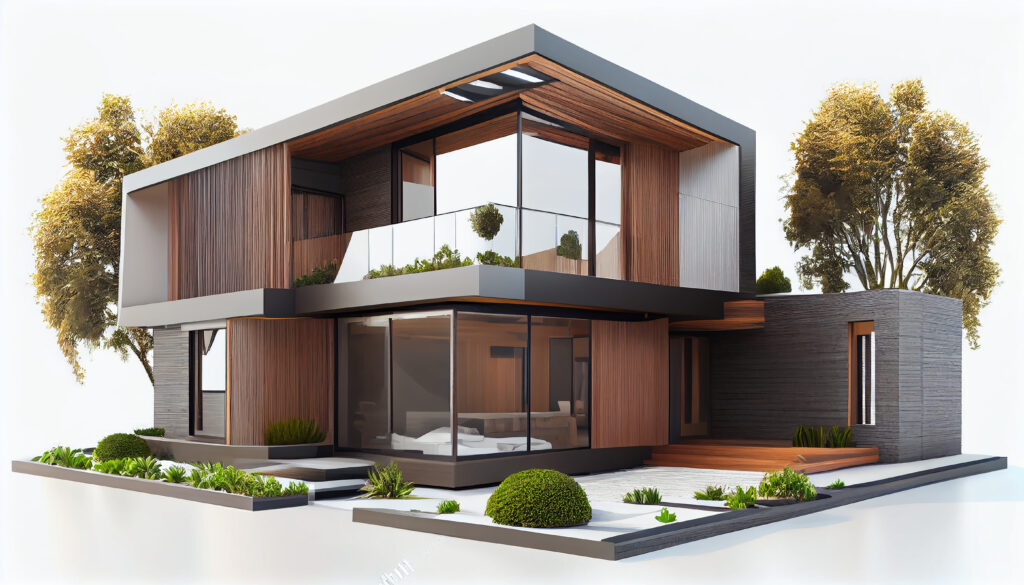
India is a fantastic place to build your ideal home, but there are a lot of choices to be made, so it might be intimidating. This in-depth guide covers 14 important factors, full of features and statistics specific to the Indian setting, to give you the confidence to move through the process and design a room that suits your individual way of living.
1. Location, Location, Location (Proximity Matters):
The groundwork for your dream is laid by selecting the ideal site. Think about your daily commute (large Indian cities have an average commuting time of 42 minutes). It is imperative to be close to important facilities such as schools (preferably within 1.6 km for walkability, offices, supermarkets (within 8 km for walkability, and hospitals. For long-term contentment, find out about the neighbourhood’s growth plans, sense of community, and safety record. Recall that a thoughtful location can increase resale value by as much as 15%.
2. Choosing High-Quality Materials (Duration is Crucial):
Don’t skimp on the supplies! Invest in high-quality solutions that reduce repair costs and provide long-term value. Take clay tile roofing, for example, which can withstand temperatures up to 100 degrees Celsius and works well in India’s hot environment. To save up to 30% on heating and cooling expenses, use energy-efficient windows with double-glazed glass and a reflective coating.
3.Adaptability is Key: Designing for Your Life’s Journey
Plan ahead! Identify that your family’s needs can change. To accommodate an expanding family, factor in extra bathrooms or bedrooms (the national average for a home has 2.4 bedrooms). Create adaptable areas, such as a room that doubles as a guest room. Give priority to accessible measures such as ramps if necessary and bigger doorways (standard width: 91 cm).

4.Convenience-focused Planning with Smart Parking Solutions:
Don’t forget about parking! Calculate how many cars you have, then design your garage space appropriately. With a normal width of 6 meters, most sedans and SUVs can fit into a two-car garage with ease. Make sure there is adequate room in the driveway for traffic, and think about adding more parking for visitors. For information on parking limitations, always consult the Resident Welfare Association (RWA) and local Municipal Corporation regulations.
5.Budgeting and Financing (Plan for Success):
A reasonable budget is necessary to construct the house of your dreams. Consider building costs (average national: ₹3–4 crore), labour, supplies, permits, and unanticipated expenses. Investigate your choices for funding, such as government programs like the one known as Pradhan Mantri Awas Yojana (PMAY) or house or construction loans. A contingency fund, equal to about 10% of the overall budget, should be set aside to cover unforeseen costs.

6.Energy Efficiency: Cost and Environmental Savings:
Adopt design that is energy-efficient! To control indoor temperatures and save energy, use high-quality insulation (such as glass wool insulation, which has a thermal conductivity of 0.035 W/mK). Invest in LED lighting for the entire house to reduce electricity costs by up to 80% when compared to incandescent lights. Incorporating renewable energy sources like as solar panels—whose average cost ranges from ₹7 lakhs to ₹30 lakhs—can help you further minimize your energy expenses and environmental effect.
7.Intelligent Building Byelaws (Safety First):
Adhere to all municipal corporations’ local building norms and requirements at all times. Obtain the required permissions for structural changes, plumbing, electrical work, and building. Property usage, building height, setbacks, and other limitations are governed by byelaws. Follow your community’s environmental requirements for water saving, garbage disposal, and rainwater collection.
8.Collaborating with Experts (Experience Counts):
Collaborating with seasoned experts is crucial. Work together with architects to create a home that fulfills both your functional and aesthetic needs. Employ certified contractors who have a track record of completing projects on time, within budget, and with excellent craftsmanship. To get professional advice on designing a unique sanctuary, think about speaking with interior designers.
9.Organizing Storage: A Spot for Everything:
Efficient storage enhances the amount of usable space in your house while keeping it organized. To maximize storage without losing floor space, use built-in cabinets, cupboards, and shelves (average cost: ₹30,000 – ₹50,000). For versatility, use multipurpose furniture with concealed storage spaces or modular designs.
10.Taking Your Dream, Your Way into Account with Your Lifestyle and Personal Preferences:
Thoughtful planning and close attention to detail are necessary when designing a home that accurately captures your tastes and way of life. Start by imagining how you will use each area: a quiet puja room for spiritual activities, a designated home office for concentrated work, and an entertainment room for entertaining or relaxing. Every one of these areas of function ought to be placed and planned with the intention of maximizing both efficiency and comfort.
Give top priority to furnishings, design, and interior finishes that suit your own taste and aesthetic. Think about coordinating color schemes or themes that will express your individual style while bringing your house together. The goal is to create a cohesive space that seems genuine and friendly, regardless of your preference for a homey, rustic vibe with plush furnishings or a modern style with clean lines and minimalist design.

11.Organizing Outdoor Spaces (Extending Your Living Area):
Outdoor areas should improve curb appeal and blend in with your inside living areas. Create a landscape that fits the climate zones of India, needs little upkeep, and enhances the architectural style of your house. For entertainment and leisure, think about adding elements like a courtyard, balcony, or outdoor kitchen (the average cost of a deck in India is between ₹1.5 lakh and ₹4 lakh). Include hedges, fencing, or well-placed plants to provide security and seclusion.
12.Placing Safety and Security (Mind peace) first:
Include safety measures to safeguard your household and belongings. Put up grills for extra security on balconies and windows, particularly on lower floors. To discourage burglars and keep an eye on activities from a distance, think about installing alarm systems, security cameras with night vision (average cost: ₹20,000 – ₹50,000), and smart locks (average cost: ₹15,000 – ₹30,000). Make sure there are fire extinguishers and smoke detectors everywhere in the house. Use childproofing techniques, such as stair gates, window locks, and furniture fastening, if you have small children to avoid mishaps.
13.Addressing Environmental Impact (Building Green):
Use sustainable building techniques to lessen the environmental impact of your house. For building and finishing, use environmentally friendly materials such as locally sourced brick, granite countertops, or wood that has been sustainably obtained. Install water-saving appliances like dual-flush toilets and low-flow faucets. To reduce water consumption, think about rainwater gathering systems and native plant landscaping that is drought-tolerant. To cut down on energy use and greenhouse gas emissions, choose energy-efficient appliances with Bureau of Energy Efficiency (BEE) star ratings.
14.Future-Proofing Your Home:
Getting Ready for Technological Integration
Adopt smart technologies to increase productivity and ease of use. Install voice-activated or smartphone-controlled smart lighting controls and thermostats (average cost of a smart home system in India: ₹50,000 – ₹2 lakh). To accommodate the demands of modern entertainment, plan outlets and wiring for home theatres, multi-room audio systems, and high-speed internet access. Make sure the infrastructure in your house can handle new developments in technology, including fibre optic internet improvements or the emergence of smart home appliances.
Conclusion :
Before you begin building your dream home in India, carefully consider these 14 factors to make sure it will satisfy not just your immediate demands but also your long-term sustainability, comfort, and worth. Recall that every choice you make will affect how your new sanctuary functions, looks, and makes you feel as a whole.



